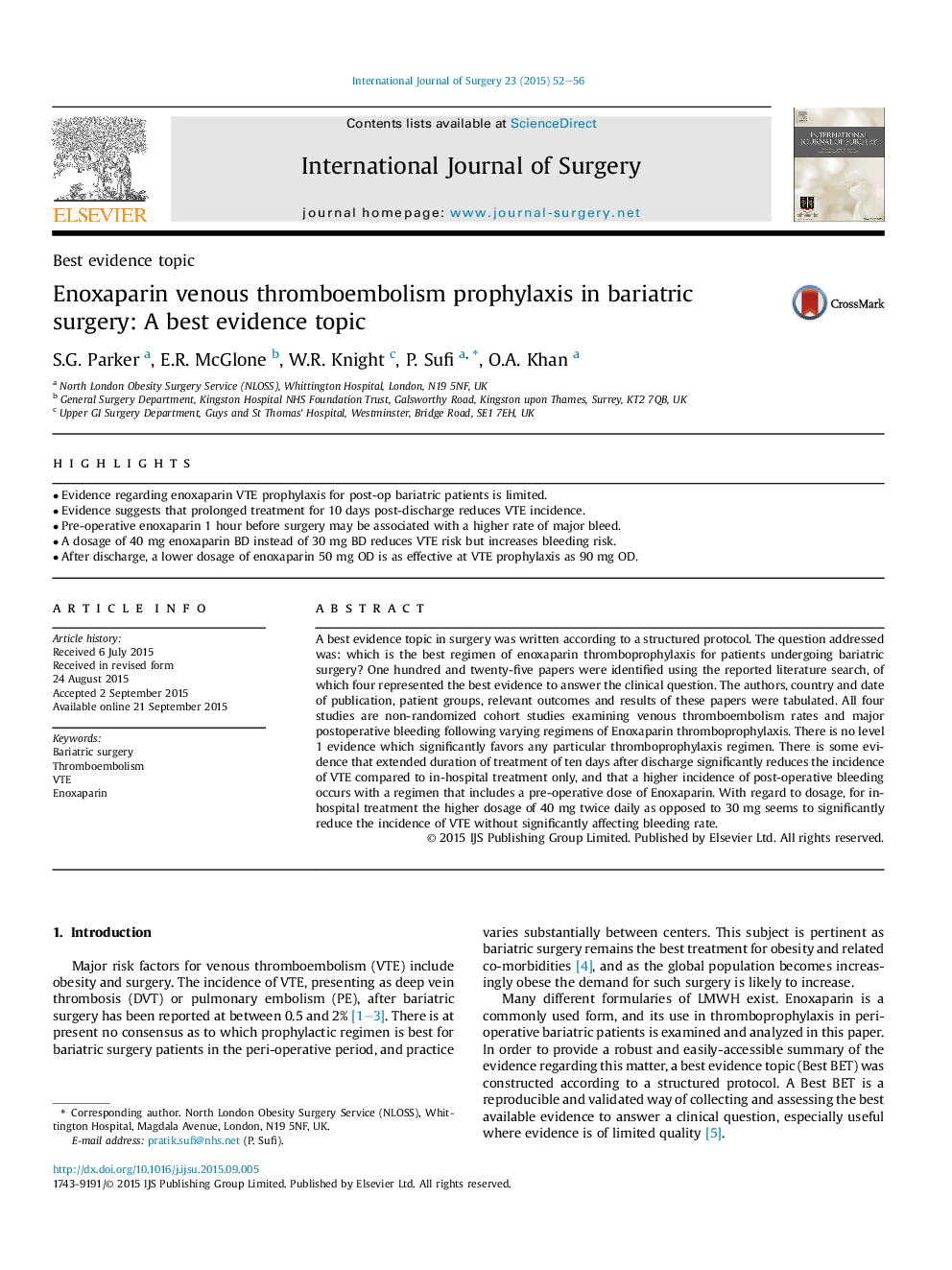| Article ID | Journal | Published Year | Pages | File Type |
|---|---|---|---|---|
| 6251232 | International Journal of Surgery | 2015 | 5 Pages |
â¢Evidence regarding enoxaparin VTE prophylaxis for post-op bariatric patients is limited.â¢Evidence suggests that prolonged treatment for 10 days post-discharge reduces VTE incidence.â¢Pre-operative enoxaparin 1 hour before surgery may be associated with a higher rate of major bleed.â¢A dosage of 40 mg enoxaparin BD instead of 30 mg BD reduces VTE risk but increases bleeding risk.â¢After discharge, a lower dosage of enoxaparin 50 mg OD is as effective at VTE prophylaxis as 90 mg OD.
A best evidence topic in surgery was written according to a structured protocol. The question addressed was: which is the best regimen of enoxaparin thromboprophylaxis for patients undergoing bariatric surgery? One hundred and twenty-five papers were identified using the reported literature search, of which four represented the best evidence to answer the clinical question. The authors, country and date of publication, patient groups, relevant outcomes and results of these papers were tabulated. All four studies are non-randomized cohort studies examining venous thromboembolism rates and major postoperative bleeding following varying regimens of Enoxaparin thromboprophylaxis. There is no level 1 evidence which significantly favors any particular thromboprophylaxis regimen. There is some evidence that extended duration of treatment of ten days after discharge significantly reduces the incidence of VTE compared to in-hospital treatment only, and that a higher incidence of post-operative bleeding occurs with a regimen that includes a pre-operative dose of Enoxaparin. With regard to dosage, for in-hospital treatment the higher dosage of 40Â mg twice daily as opposed to 30Â mg seems to significantly reduce the incidence of VTE without significantly affecting bleeding rate.
